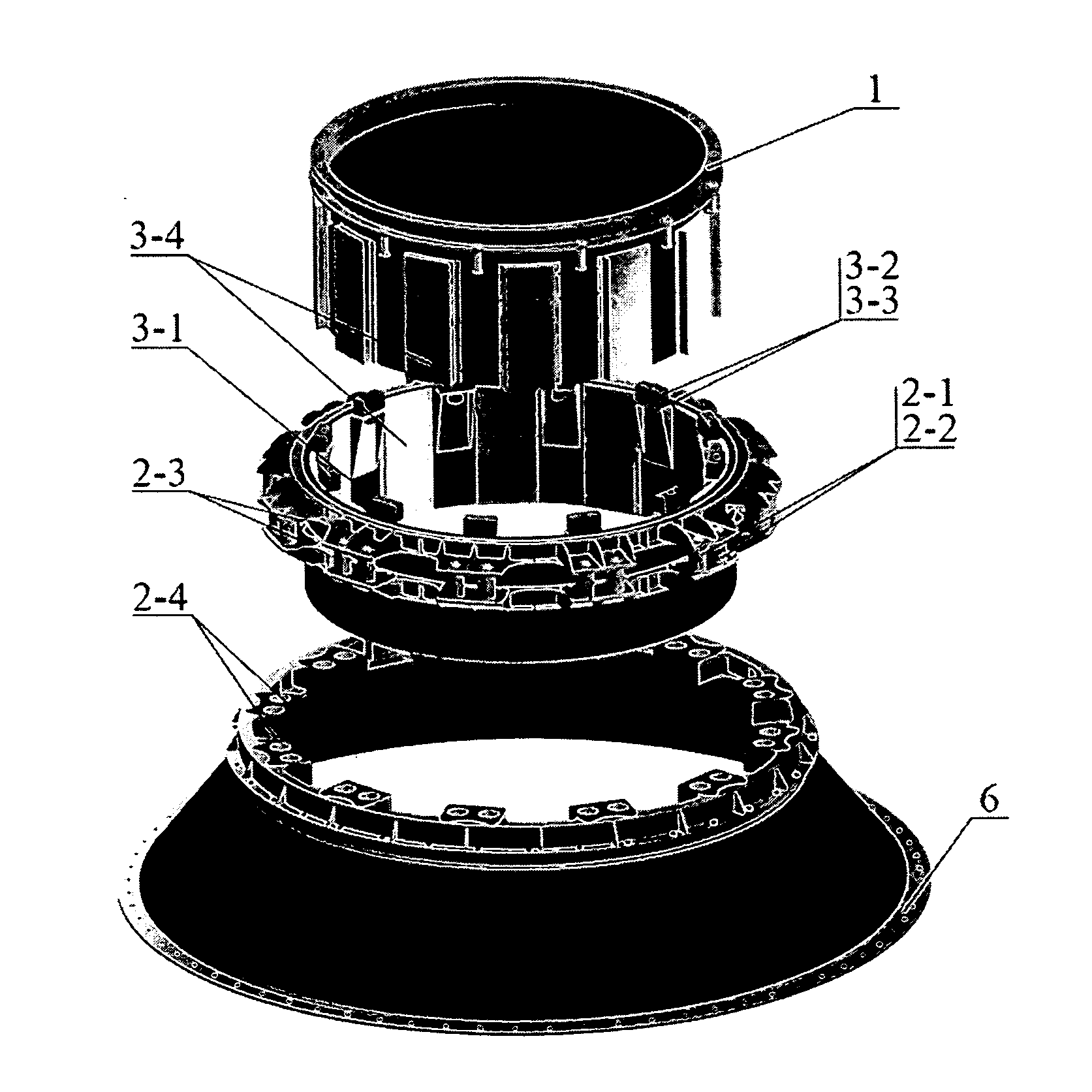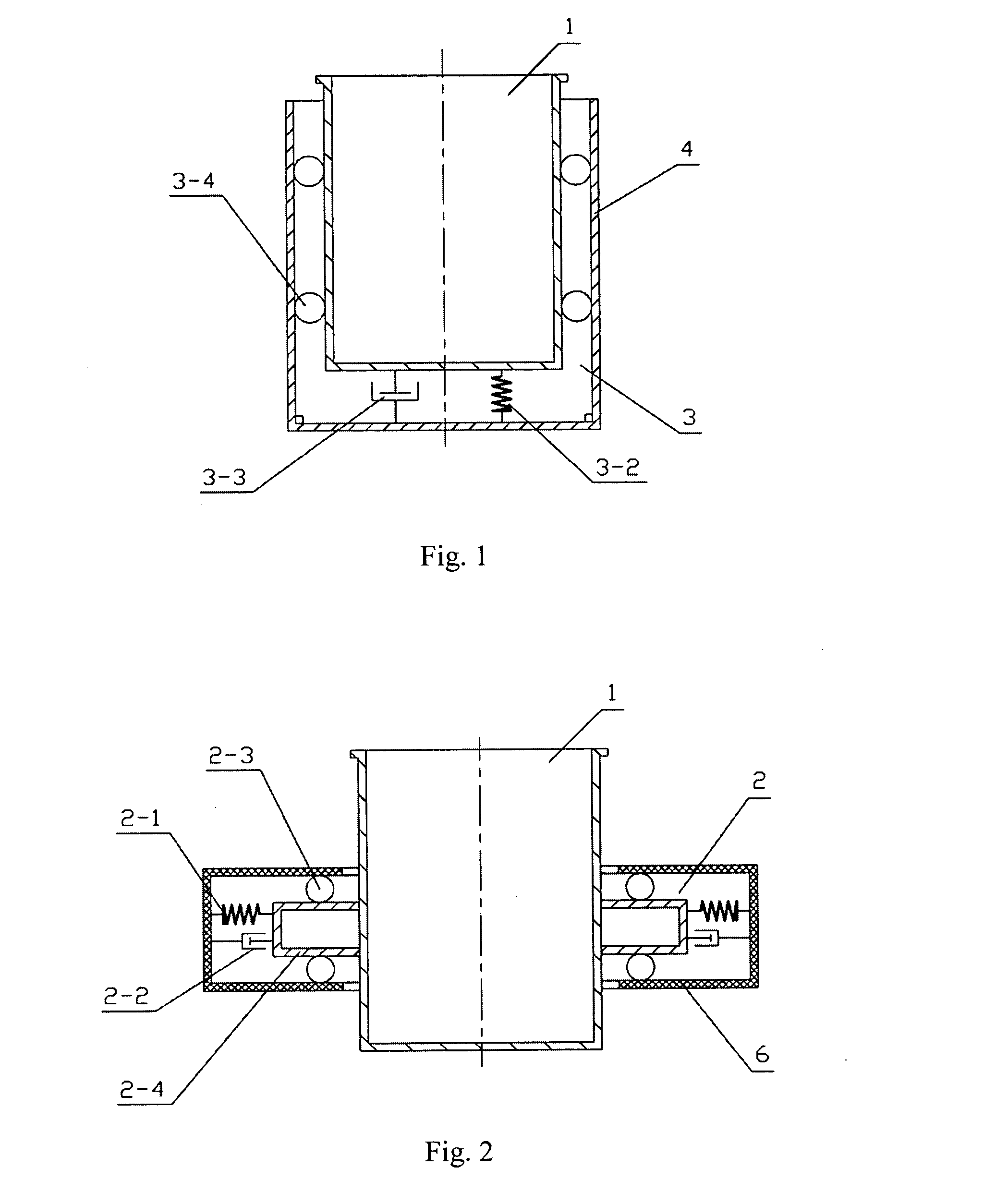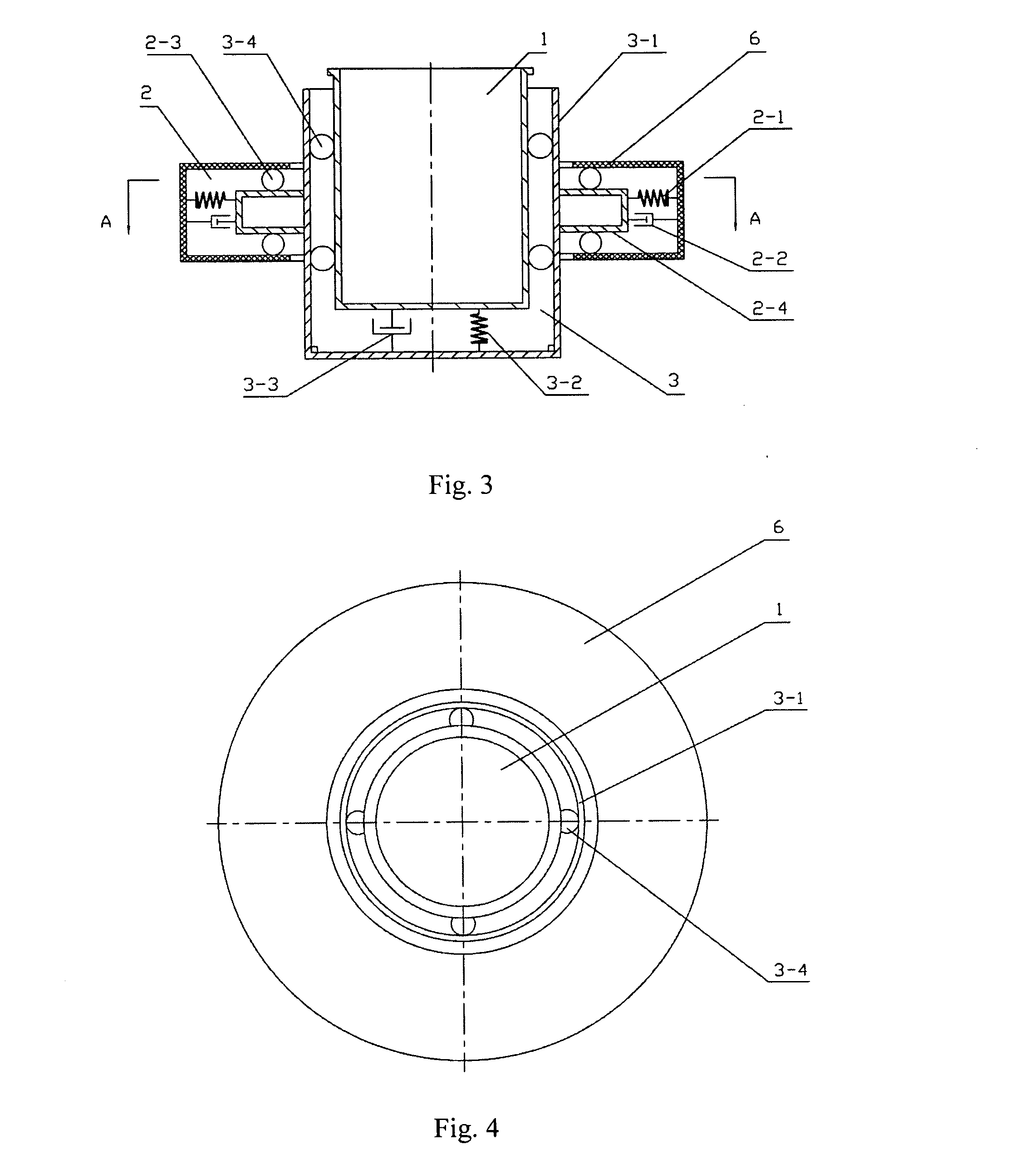Uncoupled vibrion attenuation/isolation devices
a technology of vibration attenuation and isolation device, which is applied in the direction of shock absorbers, cosmonautic vehicles, transportation and packaging, etc., can solve the problems of almost impossible to reach the limit value of longitudinal and lateral link stiffness simultaneously, and the longitudinal stiffness can reach its limit, so as to reduce the bending stiffness of the connection
- Summary
- Abstract
- Description
- Claims
- Application Information
AI Technical Summary
Benefits of technology
Problems solved by technology
Method used
Image
Examples
example 1
[0037]One embodiment of the invention shown as FIG. 1 includes a spacecraft-link portion 1, a longitudinal vibration attenuation / isolation portion 3, and a LV-link portion 4. The longitudinal vibration attenuation / isolation portion 3 is composed of the longitudinal sliding constraint structure 3-1, the longitudinal elastic element 3-2, the longitudinal damping element 3-3, and the longitudinal bilateral sliding constraint surface 3-4. The bottom of the spacecraft-link portion 1 is connected to the LV-link portion 4 by groups of longitudinal elastic elements 3-2 and the longitudinal damping elements 3-3 in parallel. The exterior surface of the spacecraft-link portion 1 is connected to the interior surface of the LV-link portion 4 by the longitudinal bilateral sliding constraint surface 3-4.
[0038]The spacecraft-link portion 1 and the LV-link portion 4 construct a longitudinal sliding pair which only allows the spacecraft-link portion 1 to translate along the longitudinal direction rel...
example 2
[0039]One embodiment of the invention shown as FIG. 2 includes a spacecraft-link portion 1, a lateral vibration attenuation / isolation portion 2, and a LV-link portion II 6. The lateral vibration attenuation / isolation portion 2 is composed of the lateral elastic element 2-1, the lateral damping element 2-2, the lateral bilateral sliding constraint surface 2-3 and the lateral sliding structure 2-4. The exterior surface of the spacecraft-link portion 1 and the interior of the lateral sliding structure 2-4 are fixed together. The exterior surface of the lateral sliding structure 2-4 is connected to the interior surface of the LV-link portion II 6 by groups of lateral elastic elements 2-1 and lateral damping elements 2-2 in parallel. The lateral sliding structure 2-4 is connected the LV-link portion II 6 by the lateral bilateral sliding constraint surface 2-3.
[0040]The LV-link portion II 6 and the lateral sliding structure 2-4, which is fixed on the spacecraft-link portion 1, construct a...
example 3
[0041]One embodiment of the invention shown as FIGS. 3-5 includes a spacecraft-link portion 1, a lateral vibration attenuation / isolation portion 2, a longitudinal vibration attenuation / isolation portion 3, and a LV-link portion 6. One engineering realization of this embodiment is shown as FIGS. 9-10, which depict the vibration damping elements in more detail. The lateral vibration attenuation / isolation portion 2 is composed of the lateral elastic element 2-1, the lateral damping element 2-2, the lateral bilateral sliding constraint surface 2-3 and the lateral sliding structure 2-4. The longitudinal vibration attenuation / isolation portion 3 is composed of the longitudinal sliding constraint structure 3-1, the longitudinal elastic element 3-2, the longitudinal damping element 3-3, and the longitudinal bilateral sliding constraint surface 3-4. The bottom of the spacecraft-link portion 1 is connected to the longitudinal sliding constraint structure 3-1 by groups of the longitudinal elas...
PUM
 Login to View More
Login to View More Abstract
Description
Claims
Application Information
 Login to View More
Login to View More - R&D
- Intellectual Property
- Life Sciences
- Materials
- Tech Scout
- Unparalleled Data Quality
- Higher Quality Content
- 60% Fewer Hallucinations
Browse by: Latest US Patents, China's latest patents, Technical Efficacy Thesaurus, Application Domain, Technology Topic, Popular Technical Reports.
© 2025 PatSnap. All rights reserved.Legal|Privacy policy|Modern Slavery Act Transparency Statement|Sitemap|About US| Contact US: help@patsnap.com



